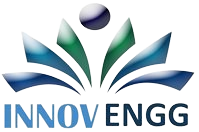In the world of project management, the ability to keep track of every detail is essential for success. This is where project documentation plays a pivotal role. Effective project documentation ensures clarity, accountability, and transparency throughout the project’s lifecycle. In this blog, we will explore the significance of project documentation, its key elements, and how it contributes to successful project outcomes.
The Role of Project Documentation
Project documentation serves as the project’s memory, providing a comprehensive record of all aspects, from initial planning to final closure. Its importance lies in:
- Clarity: It offers a clear understanding of project objectives, scope, timelines, and responsibilities, minimizing ambiguity and misunderstandings.
- Accountability: Documentation assigns roles and responsibilities, making it easier to track who is responsible for specific tasks and decisions.
- Transparency: It provides a transparent view of project progress, enabling stakeholders to monitor developments and make informed decisions.
- Knowledge Transfer: Documentation ensures that knowledge and insights gained during the project are preserved and can be transferred to future projects.
Key Elements of Project Documentation
- Project Charter: This foundational document outlines the project’s objectives, scope, stakeholders, and high-level timelines. It serves as a guiding document throughout the project.
- Project Plan: The project plan includes detailed information on project phases, tasks, timelines, resources, and dependencies. It serves as a roadmap for project execution.
- Scope Statement: The scope statement defines the project’s boundaries, objectives, deliverables, and any exclusions. It prevents scope creep and helps manage expectations.
- Risk Register: This document identifies potential risks, their impact, and mitigation strategies. It helps the project team proactively manage and respond to risks.
- Communication Plan: The communication plan outlines how project information will be shared with stakeholders, ensuring consistent and timely communication.
- Change Log: As changes inevitably occur during a project, the change log tracks all modifications to the project plan, scope, or requirements.
- Meeting Minutes: Detailed meeting minutes capture discussions, decisions, action items, and responsible parties during project meetings.
- Status Reports: Regular status reports provide an overview of project progress, highlighting achievements, challenges, and upcoming milestones.
The Benefits of Effective Project Documentation
- Reduced Miscommunication: Clarity in documentation reduces the chances of miscommunication or misunderstandings among team members and stakeholders.
- Enhanced Accountability: Documented roles and responsibilities ensure that team members are accountable for their tasks and deliverables.
- Efficient Decision-Making: Accurate and up-to-date documentation facilitates informed decision-making by providing a comprehensive view of the project’s status.
- Knowledge Retention: Documentation preserves valuable project knowledge, which can be used to improve processes and guide future projects.
Project documentation is the backbone of successful project management. It ensures clarity, accountability, and transparency while serving as a valuable resource for knowledge transfer and decision-making. Every project manager should prioritize the creation and maintenance of thorough project documentation to maximize project success and build a solid foundation for future endeavors. Remember, in the world of project management, clarity and accountability begin with effective documentation.
If you have any sort of inquiry feel free to utilize the 30 minutes Free Consultation that can be booked by email sales@innovengg.com.au.
